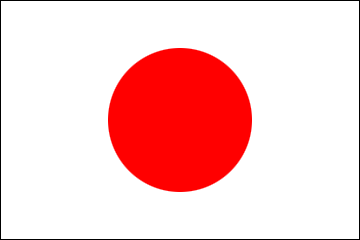Aizome (indigo-dyeing): How is indigo dye made?
2023/5/20
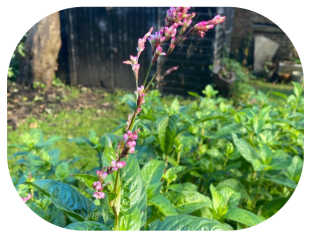 Persicaria Tinctoria
Persicaria Tinctoria(Japanese indigo plant)
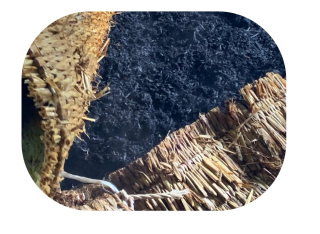 Sukumo
Sukumo
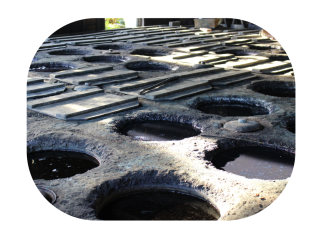 Vats
Vats
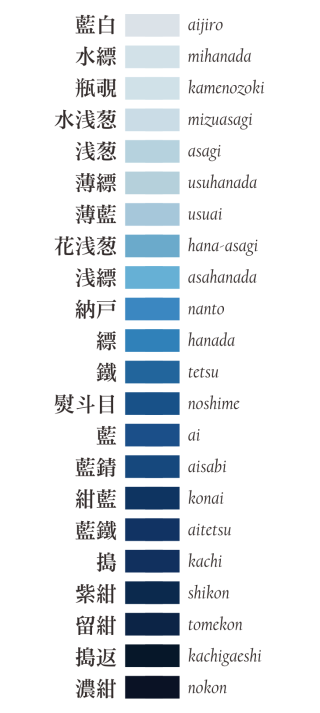
Aizome (indigo-dyeing) occupies a special place in the customs and culture of Japan and even though the techniques date back to ancient times, it continues to have a deep influence on fashion and design today.
Indigo is an annual plant, so seeds are sown every spring. In mainland Japan, the sowing season is typically from early March to mid-April but can be up to May in colder regions such as Hokkaido.
Seedlings are carefully watered, outside of rainy season. The first harvest of leaves usually takes place in July, once it grows to a height of about 50 cm with a second harvest taking place approximately a month later.
Leaves are separated from the stems and are finely chopped. The chopped leaves are then spread out on mats and left to dry and ferment for about four months until it becomes sukumo. Throughout this period the leaves are watered, turned and aired regularly to encourage decomposition. Temperatures in fermenting rooms can rise to 70 degrees as the leaves emit heat and ammonia.
Managing the dye solution requires skillful control of variables such as temperature, humidity, and climatic conditions. A water-soluble dye is created using lye (derived from wood ash), lime powder, wheat bran, and even saké. This process of making the dye solution is called ai o tateru (building the indigo).
Items to dye are immersed in the vats. They emerge as a yellowish green colour then, as the item reacts with the oxygen in the air, the colour gradually turns to blue. The process is repeated depending on the depth of shade required. Many of these shades have specific names. The dark shade of navy blue that is closes to black is known as nōkon while the lightest shade is aijiro, which is the base colour of the iconic Tokyo Sky Tree. Indigo designs were featured in the logos of the Tokyo 2020 Olympic and Paralympic Games.
The growing and preparing of indigo dye is a subtle process. Each season will produce a slightly different crop and colour. A natural dye penetrates deep into the clothing fibres, meaning the colour is less likely to fade over time when compared to a chemical dye.
Indigo is an annual plant, so seeds are sown every spring. In mainland Japan, the sowing season is typically from early March to mid-April but can be up to May in colder regions such as Hokkaido.
Seedlings are carefully watered, outside of rainy season. The first harvest of leaves usually takes place in July, once it grows to a height of about 50 cm with a second harvest taking place approximately a month later.
Leaves are separated from the stems and are finely chopped. The chopped leaves are then spread out on mats and left to dry and ferment for about four months until it becomes sukumo. Throughout this period the leaves are watered, turned and aired regularly to encourage decomposition. Temperatures in fermenting rooms can rise to 70 degrees as the leaves emit heat and ammonia.
Managing the dye solution requires skillful control of variables such as temperature, humidity, and climatic conditions. A water-soluble dye is created using lye (derived from wood ash), lime powder, wheat bran, and even saké. This process of making the dye solution is called ai o tateru (building the indigo).
Items to dye are immersed in the vats. They emerge as a yellowish green colour then, as the item reacts with the oxygen in the air, the colour gradually turns to blue. The process is repeated depending on the depth of shade required. Many of these shades have specific names. The dark shade of navy blue that is closes to black is known as nōkon while the lightest shade is aijiro, which is the base colour of the iconic Tokyo Sky Tree. Indigo designs were featured in the logos of the Tokyo 2020 Olympic and Paralympic Games.
The growing and preparing of indigo dye is a subtle process. Each season will produce a slightly different crop and colour. A natural dye penetrates deep into the clothing fibres, meaning the colour is less likely to fade over time when compared to a chemical dye.
Aizome: The Craft of Japanese Indigo-dyeing
Visit the Embassy to learn more about indigo dye and see the exquisite works of nine talented artists in our free exhibition.
Until Friday, 28 July 2023
Open weekdays 09:30 - 17:30, closed weekends
The Embassy of Japan, 101-104 Piccadilly, London W1J 7JT
Advance tickets: book a timeslot here.
Admission is free, but photo ID is necessary to gain entry to the Embassy.
Until Friday, 28 July 2023
Open weekdays 09:30 - 17:30, closed weekends
The Embassy of Japan, 101-104 Piccadilly, London W1J 7JT
Advance tickets: book a timeslot here.
Admission is free, but photo ID is necessary to gain entry to the Embassy.
